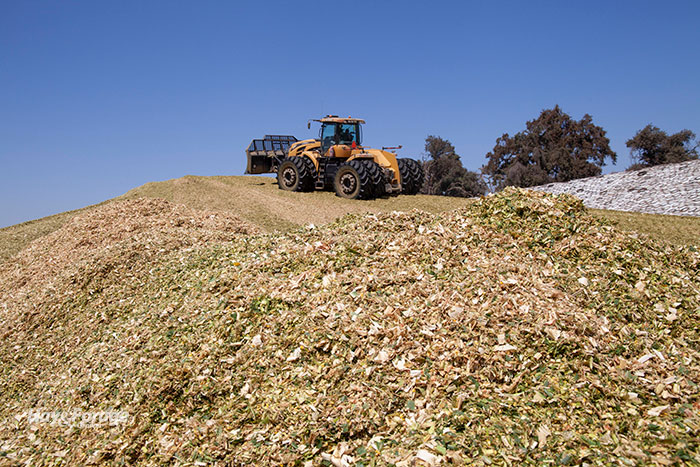
In most biological systems, answers are never straight forward, and there seems to be exceptions to every rule. That’s certainly the case when it comes to changes in the corn silage processing score (CSPS) during fermentation.
Luiz Ferraretto, University of Wisconsin-Madison assistant professor and dairy extension specialist, has completed several studies looking at the effects of processing and fermentation on corn silage quality and CSPS, or the percent of starch passing through a 4.75-millimeter (mm) sieve.
“As soon as the silo is sealed and oxygen is used up, anaerobic bacterial fermentation begins, acids accumulate, and the pH drops,” Ferraretto notes in Vita Plus’ Forage Foundations newsletter. “Although these are the most important events for forage conservation, much more is happening within the silo.”
For instance, enzymes break down zein proteins, which prevent the digestion of starch granules. A large portion (60%) of these enzymes originate from bacteria. Enzymes are also found within the kernels and are activated by low pH levels. Starch digestibility spikes during initial fermentation, and Ferraretto’s studies found that digestibility continues to gradually increase with prolonged storage by as much as 10% in some cases.
Changes to CSPS
The extension specialist’s research has also evaluated the effects of initial corn maturity and processing quality on changes during storage. Initially, Ferraretto found CSPS improved by 8 and 10 percentage units during storage for corn silage with initial scores of 60% and 50%, respectively.
The researcher questioned if the improvement was related to the initial CSPS. He initiated a study that evaluated three harvest maturities and two roll-gap settings. The corn silage was then stored for 240 days. The CSPS was improved across all of the treatments, although he found the magnitude of the response was not related to the initial CSPS.
Ferraretto notes that a recent study from Cornell University with four hybrids grown at two locations for two consecutive years did not result in a consistent effect on CSPS. This suggests that an improvement in processing score may not always occur.
Another unanswered question is related to the fate of intact or slightly damaged kernels during silage fermentation. In one study, Ferraretto evaluated poorly processed silage (less than 30% of starch passing through a 4.75-mm sieve) at harvest to the same silage after being ensiled for 120 days. This silage contained many intact or slightly damaged kernels. The CSPS values were identical for fresh and fermented samples.
Ferraretto notes that most trials have shown benefits of fermentation and prolonged storage on CSPS, and an improvement throughout fermentation is expected. However, fermentation and prolonged storage will not compensate for inadequate processing. He recommends targeting a CSPS of 70% to 75% at harvest.

C.J. Weddle served as the 2020 Hay & Forage Grower editorial intern. She currently attends Mississippi State University, majoring in agricultural education, leadership, and communications. She grew up on a farm in Vardaman, Miss., where her family raises sweet potatoes and soybeans.

